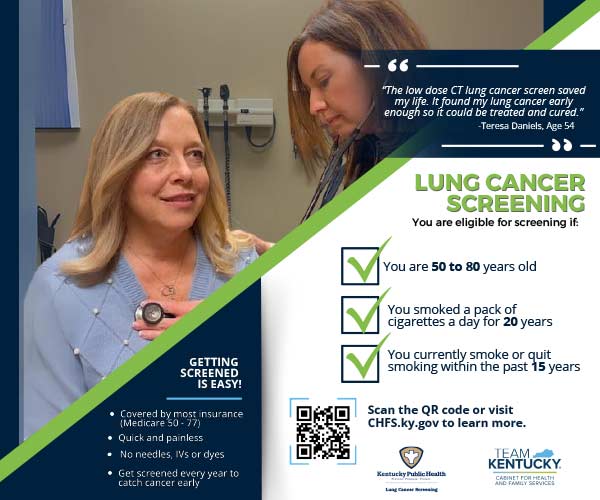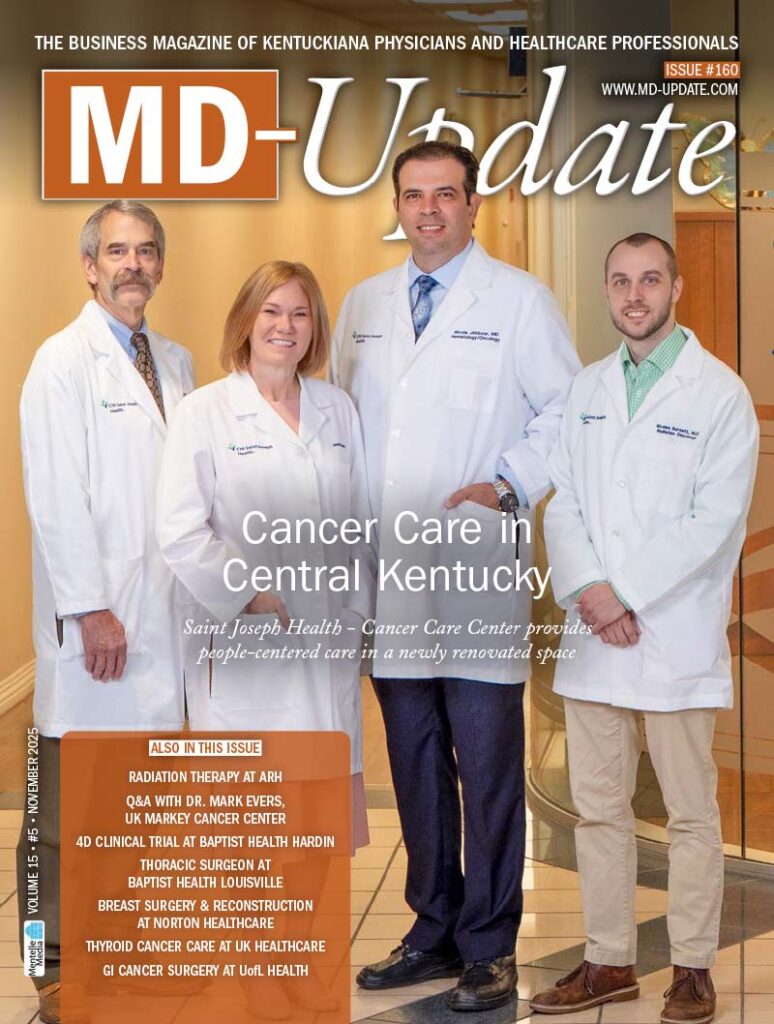Ravi Sharma, MD, uses new cardiac technology at UofL Health to improve patient outcomes
LOUISVILLE Helping cardiac patients who have come to the end of their treatment options fuels Ravi Sharma, MD’s practice.
Sharma, interventional cardiologist and structural heart and valve disease expert with UofL Health, says his own experience with physicians after a car accident inspired him to make a difference in patients’ lives. Now, he uses his training to provide cutting-edge and innovative solutions to cardiac patients in the Kentuckiana region.
After attending Grant Medical College, a premier medical school in Mumbai, India, Sharma came to the U.S. as a visiting student at Harvard Medical School. He finished his residency at the University of Pittsburgh Medical Center and did a cardiovascular imaging and post-doctoral fellowship at Johns Hopkins University, in Baltimore. He then returned to Boston for a general cardiology fellowship at Beth Israel Deaconess Medical Center at Harvard Medical School. Sharma says his passion for advanced cardiovascular therapies led him to an interventional cardiology fellowship at Harvard, where he focused on structural heart diseases, valvular heart disorders, transcatheter treatments, and complex coronary interventions.
He found his calling for medicine from his own experience, he says.
“When I was 16, I had a motor vehicle accident with multiple injuries and fractures. That was my first experience with physicians and physician teams,” he says. “The way they helped me during those difficult times to get me back on my feet, and then extensive rehab, was the one incident in my personal life that filled me with gratitude towards this noble profession. That was the reason why I chose to pursue medicine as my career.”
The Lure of Cardiology
As a field, cardiology presents the opportunity to delve into many different aspects of science, he says.
“Cardiology has applications from basic fields of science like physics, chemistry, and pharmacology; everything is combined. You can actually provide more treatment options to the patient based on those backgrounds,” Sharma says. “I always related to the science. In my personal experience, during my training, I saw that with patients with cardiac diseases, you can provide relief to problems quite quickly and help save lives. It is an intense field, but the gratification of truly changing the course of someone’s ailment, or, for the matter, even life expectancy, was something that led me to gravitate towards cardiology.”
During his training, he met and married his wife, Natasha Jain, MD, a medical oncologist. The two moved to Kentucky when Sharma took the job with UofL Health in 2022. The move put them close to Sharma’s sister and sister-in-law who live in Evansville and Cincinnati.
“We have found a home in Louisville. It’s an amazing city, a combination of anything that you get in a major city, as well as the charm of being in a relatively smaller city. Being young professionals as well as raising a young family, this is the best place to be,” says Sharma.
At his Louisville medical practice, most of his time is spent doing procedures and in clinic with patients.
“Most of the time we do our minimally invasive approach, to fix the blockage in the heart,” he says. “With the rapidly evolving field of structural heart disease, we can either repair or replace the heart valve on any kind of structural heart conditions by transcatheter approach, which is the most minimally invasive way of doing it. It does not involve open-heart surgery so the recovery is much faster, the patient comfort is much better, and we can get equivalent results as an open- heart surgery.”
Life Changing Treatment Sharma says being able to provide treatment options, like transcatheter aortic valve replacement and tricuspid and mitral valve repair and replacement procedures, among others, is one of the most rewarding aspects of his practice.
“In these cases, patients have been suffering for a long time with a gradually progressing disease. Many may not have an open-heart surgery as an option, so they think that they’re at the end of the road, without any options available. But now, thankfully, with a minimally invasive approach, we can offer a solution and patients who have basically no hope or no management plan or treatment options available to them, now feel better after the procedure.”
The remainder of his time is spent between inpatient rounds and collaborating with other physicians. While his patient population ranges from 18 to 100, most of his patients are between 50 and 90, where cardiovascular disease is much more common. With the younger patient population, cardiac issues tend to come with another underlying issue like congenital heart disease or cancer.
The lifestyle, genetics, and environment of the area come together to make the Kentuckiana region at high risk for cardiac issues. Sharma says he feels fortunate that his training allows him to provide state-of-the art care to patients in and around the Louisville region.
After evaluating the patient and looking at prior cardiovascular testing, Sharma says he will talk with the rest of the cardiac team to determine what the best treatment is moving forward.
“Once we have all the diagnostic testing available and we sit with the patient family, we devise a plan based on the needs of the patient,” he says. “We don’t only talk about what we need to do right now to fix their problems. We have lifetime management of the patient. We do not only need to provide short term relief of their symptoms, but we also need to make sure that we have a plan available for them so we can get them through the cardiovascular conditions for the remainder of their life expectancy.”
“Once we have all the diagnostic testing available and we sit with the patient family, we devise a plan based on the needs of the patient,” he says. “We don’t only talk about what we need to do right now to fix their problems. We have lifetime management of the patient. We do not only need to provide short term relief of their symptoms, but we also need to make sure that we have a plan available for them so we can get them through the cardiovascular conditions for the remainder of their life expectancy.”
Off Oxygen in One Day
Giving patients a longer life expectancy sometimes means being involved in the development and implementation of new devices, he says. With one patient, his procedures changed their life dramatically. The patient, an elderly woman, had previously been very active, but had noticed a decline in her energy levels. Fatigued and short of breath, the patient ended up on an oxygen tank.
She was diagnosed by a general cardiologist partner to have severe mitral valve regurgitation and was not a candidate for open heart surgery. She was, however, deemed a candidate for a transcather mitral valve repair, which involves the insertion of a small catheter to analyze the valve and then to repair it.
“The best thing about this case was that we did the procedure in the morning, the patient was recovered from anesthesia by afternoon, and the next morning, she was off oxygen and just walking the hallway without any limitations.” he says. “She was extremely excited because she got her quality of life back. When I saw her, she hugged me and said, ‘You really changed my life.’”
A Team Approach to the Future
Currently, Sharma is involved in the study of new devices that can help further those life expectancies, he says. One study is the moderate aortic stenosis trial which will help with patients who have moderate narrowing of the aortic valve.
Data shows that patients who have moderate narrowing of aortic valve and are symptomatic, feel better once they get a valve replacement,” he says. “We are one of the few heart centers in the country where the trial is happening.”
The future of interventional cardiology, Sharma says, will rely on training the next generation of specialists. “From the complex intervention perspective, I see that now is the time to start training this next generation of interventional cardiology specialists.
I think the onus is going to be on us, the doctors who have worked with these devices, procedures, and techniques, to train the next generation of physicians so they can grow in the community and provide therapy options for the larger patient population,” he says. New developments and devices on the forefront of valve replacement will be a key component of that future, and of that training. “As in any medicine field,
there will be newer, more refined devices, as well as a refinement of the techniques that will make the mitral and tricuspid valve repair or replacement more streamlined,” he says. “I would say it’s going to be a lot more reproducible, and it is going to be a lot more generalized, so this therapy can actually be provided to a larger patient population.”



